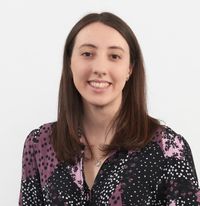HMRC to rake in bumper £10.4 billion from tax on savings
With interest rates at a 16-year high, how can you shield your savings from the taxman?


The taxman is expecting to rake in a bumper £10.4 billion in tax on savings interest this year, according to projections from HMRC for the 2024/2025 financial year.
That’s up from £9.1 billion last year (2023/2024), £3.9 billion two years ago (2022/2023), and £1.4 billion three years ago (2021/2022).
What’s more, the amount could rise even further once the confirmed figures are in. Laura Suter, director of personal finance at AJ Bell, points out that last year’s figures were revised upwards by almost 40%.
MoneyWeek
Subscribe to MoneyWeek today and get your first six magazine issues absolutely FREE

Sign up to Money Morning
Don't miss the latest investment and personal finances news, market analysis, plus money-saving tips with our free twice-daily newsletter
Don't miss the latest investment and personal finances news, market analysis, plus money-saving tips with our free twice-daily newsletter
“If we see a similar increase between the predicted and actual tax take for this year, it could mean the nation paying £14 billion in tax on their savings,” she says.
The figure comes at a time when the national tax burden is at a record high. Income tax thresholds have been frozen until 2028, the dividend and capital gains tax allowances have been slashed in recent years, and inheritance tax receipts are on track for another record year.
What's more, politicians have not been as generous with tax pledges as some were hoping in the lead-up to the general election.
The main promises are a 2p National Insurance cut from the Conservatives, as well as their “triple lock plus” policy which would unfreeze the personal allowance for pensioners. Meanwhile Labour has promised not to hike income tax rates, National Insurance or VAT.
Against this backdrop, we look at the strategies you can take to reduce the amount of tax you pay on your savings.
What’s driving higher tax receipts?
Many people built up large cash savings during the pandemic and interest rates are now at a sixteen-year high. This means many savers are now generating a healthy amount of interest each year. All of this has left the taxman with a bigger pot to raid.
With the best easy-access and one-year fixed savings accounts offering rates of around 5%, you could find yourself crossing the tax-free threshold (£1,000 for basic-rate taxpayers) as soon as you have around £20,000 in savings.
What’s more, frozen tax thresholds have conspired with inflation in recent years to leave savers at the mercy of fiscal drag.
“More people are being pushed into higher tax bands, which means they see their personal savings allowance cut in half, or lost altogether if they find themselves in the additional rate tax bracket,” explains Suter.
Fortunately, there are several strategies savers can take to reduce their tax bill when it comes to their savings. We highlight five tips.
1. Familiarise yourself with your tax-free allowances
Most people can earn a certain amount of interest on their savings without having to pay any tax. Make sure you familiarise yourself with your allowances and make the most of them.
If you are a basic-rate taxpayer, then you are entitled to earn up to £1,000 in tax-free interest. This is called the personal savings allowance. This falls to £500 for higher-rate taxpayers, while additional rate tax-payers aren’t entitled to anything at all.
On top of this, if your annual income is less than £17,570, you could be entitled to earn up to an additional £5,000 in tax-free savings interest each year – also known as the starting rate for savings.
Those who earn £12,570 or less are entitled to the full amount. Meanwhile, those who earn between £12,570 and £17,570 will lose £1 of the starting rate for every pound they earn over the personal allowance.
The starting rate for savings and the personal savings allowance can be added together – so if your annual income is less than £12,570, you could be entitled to earn £6,000 in savings interest without paying any tax.
2. Stash your cash savings in an ISA
Each year, adults can stash up to £20,000 in a tax-efficient wrapper known as an individual savings account (or ISA). You can choose between a cash ISA or a stocks and shares ISA, depending on what you are looking to achieve.
Any assets held within the wrapper are exempt from income and capital gains tax. Your ISA allowance renews every year on 6 April (the start of the tax year). It is a ‘use it or lose it’ allowance.
If you currently hold large cash savings in a regular savings account, you should consider moving it into an ISA. There are a broad range of options available, from easy-access accounts to fixed-rate options.
3. Consider buying some Premium Bonds
If you have already maximised your ISA allowance, Premium Bonds could be a good option for you. They are a savings product issued by National Savings & Investments (NS&I). You can invest anything from £25 to £50,000 in Premium Bonds.
Premium Bonds operate a little differently to a regular savings account. They don’t pay interest; instead, you are entered into a monthly prize draw. Prizes start at £25 and go all the way up to £1 million, so while you aren’t guaranteed to win anything, you also stand a chance of hitting the jackpot.
Premium Bond prizes are tax-free and, the more bonds you hold, the more likely you are to win a prize. Premium Bonds are also one of the safest investments you can get, as they are backed by the UK government.
4. Top up your pension
If you have some extra cash and want to avoid putting it into a savings account (where any interest could be taxed), you could consider topping up your pension.
A pension is one of the most tax-efficient ways to save for retirement. Like an ISA, any income or capital gains generated within the wrapper are shielded from the taxman. What’s more, HMRC gives you generous tax relief on any money you contribute.
Each time you pay into your pension (up to a certain limit), HMRC reimburses the tax you paid on the money when you first earned it. For example, if you are a basic-rate taxpayer (20%) and you put £80 into your pension, HMRC grosses it back up to £100.
Meanwhile, if you are a higher or additional-rate taxpayer, you get reimbursed at a rate of 40% or 45%. This means you would only have to contribute £60 or £55 for HMRC to top it back up to £100.
The basic-rate tax refund (20%) is applied automatically, but higher and additional-rate taxpayers need to claim the rest back through their tax return.
5. Keep track of your interest to avoid getting fined
Once you have used up your personal savings allowance, you will need to pay tax on any excess interest. Your usual income tax rate will apply: 20% for basic-rate taxpayers, 40% for higher-rate taxpayers, and 45% for additional-rate taxpayers.
Unlike the tax on your PAYE salary, this isn’t collected automatically. You will need to file a self-assessment tax return. If you forget to do this or miss the deadline, you could face a fine. Interest is often charged on late payments.
Get the latest financial news, insights and expert analysis from our award-winning MoneyWeek team, to help you understand what really matters when it comes to your finances.
Katie has a background in investment writing and is interested in everything to do with personal finance, politics, and investing. She previously worked at MoneyWeek and Invesco.
-
 Metals and AI power emerging markets
Metals and AI power emerging marketsThis year’s big emerging market winners have tended to offer exposure to one of 2025’s two winning trends – AI-focused tech and the global metals rally
-
 8 of the best houses for sale with beautiful fireplaces
8 of the best houses for sale with beautiful fireplacesThe best houses for sale with beautiful fireplaces – from a 15th-century cottage in Kent to a 17th-century palazzo in Oxfordshire
